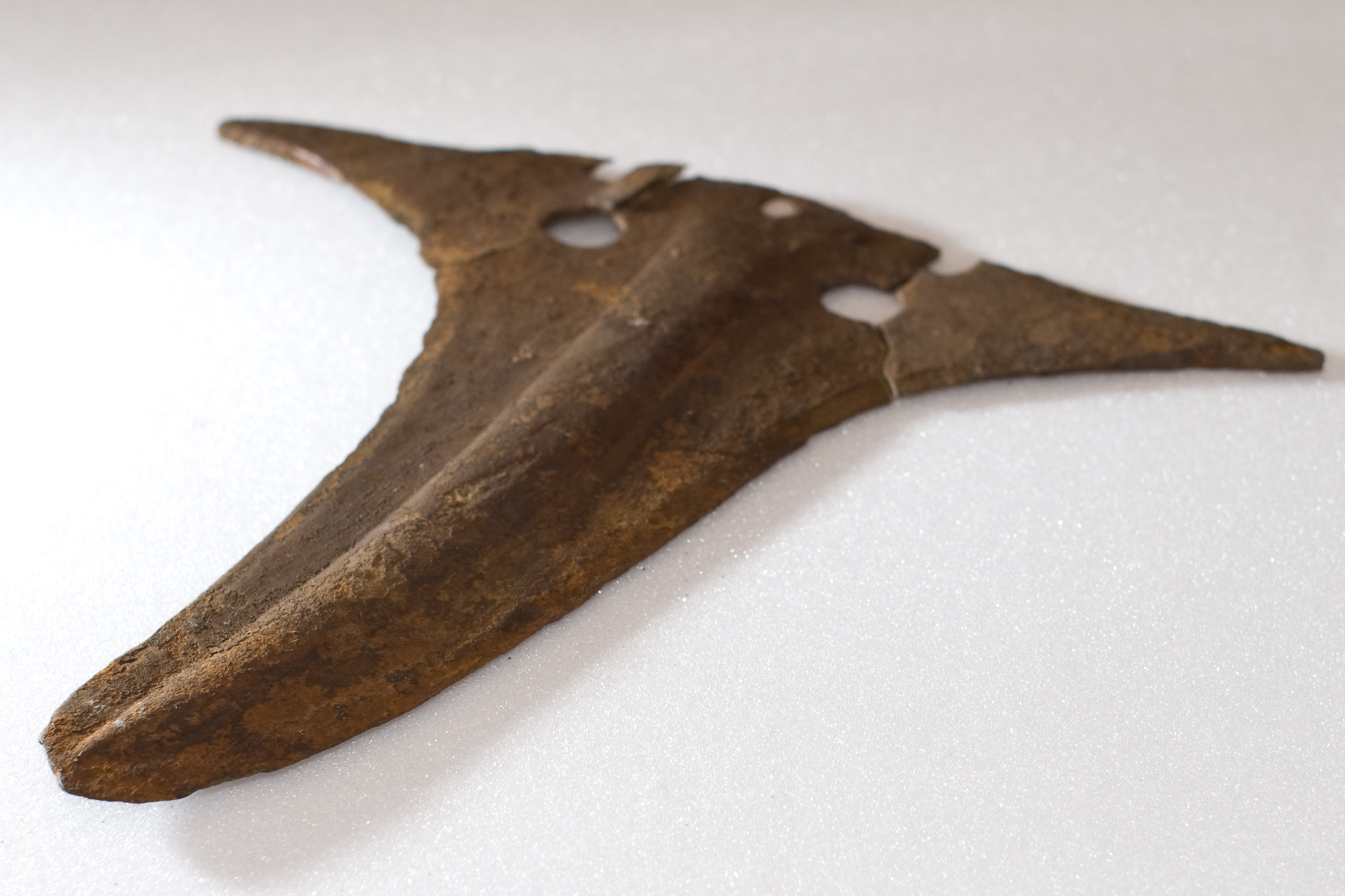GALWAY BRONZE AGE HALBERD
Continuing our series of old posts (to mark our 10th year in business), ones we feel were good, prescient or elicited some good conversation or debate, this post was first published in February 2010. The halberd is now on loan to Galway City Museum and can be viewed on the ground floor.
Occasionally we’ve been adding to our ‘virtual museum’, with brief descriptions of the artefacts we’ve recovered over the years. Generally we’ll only post up the very special finds! One of Billy’s most notable stray finds from 2009 was retrieved during the course of archaeological testing near the River Corrib. The find was un-associated with any other artefacts or features and was identified as a Bronze Age Halberd. This weapon was fashionable in various parts of Europe in the third and second millennia BC. The halberd is distinguished by its pointed, dagger like metal blade that would have been mounted using rivets at right angles to a haft. Only 170 have been found in Ireland half of which are un-provenanced. This find has to be considered as very significant given its antiquity, rarity and its discovery near a known fording point over the River Corrib

In Professor E. Rynne’s ‘Military and Civilian swords from the River Corrib’ (1984) there is an inventory of finds recovered by amateur divers from the River during the period 1982-3. This inventory includes late mesolithic flint, chert Bann flakes, ten swords and a 20th century flare gun. Three swords were found in the vicinity of the area we were testing. They include a La Tene type, 2nd century AD sword found between Menlough and Newcastle, and a Viking period 10th century sword in close proximity to a late medieval 15th century sword both found near Jordans Island. Other finds recovered along this stretch of the river in the recent past include Bann flakes, hammerstones, axeheads, scrapers and chert and flint debitage. This material indicates a high degree of pre-historic activity on the Corrib particularly so in the vicinity of Jordan’s Island which was a documented fording point.
Our trench measured approximately 53m in length by 2m in width and was excavated to an average depth of 1m. The stratigraphy along the length of this trench consisted of an upper layer of tarmac and hardcore on a mixed silty deposit with frequent small to medium sized stones overlying a thick layer of peat. The peat contained some modern finds including brick and willow wear pottery sherds and fragments of ceramic pipe.
During the course of the testing a metal object was retrieved at a depth of 920mm from the existing surface. The object was identified as a Bronze Age Halberd dating to the second millennium BC. This weapon would have been mounted at right angles to a haft using rivets. The blade, probably made from copper was shaped like a thorn and measured 160mm in length by 110.5mm along its butt. It had a central ridge tapering to a point along its blade and near the butt were two central placed circular perforations with evidence for three rivet holes along its back edge. A small section of the upper butt was missing. On discovery permission was sought and granted from the National Museum and the Licensing Section of the National Monuments Service to enlarge the immediate area around the find spot by a further 3m to the east and 2m to the west. Consent was also granted to metal detect the area and spoil heap for associated finds. Over the course of a two day period this area was manually investigated and metal detected resulting in the retrieval of a small rectangular band of metal from the vicinity of the find spot and the recovery of the missing piece from the butt of the halberd. The find spot was later planned and recorded. Due to the antiquity of the find and to prevent against any degradation the halberd was handed over to the National Museum for immediate conservation.
This entry was posted on Friday, May 4th, 2012 at 10:24 am. It is filed under Finds, Virtual Museum and tagged with Bronze Age Ireland, halberd, weapons.
You can follow any responses to this entry through the RSS 2.0 feed.




zm479a
hisyjs